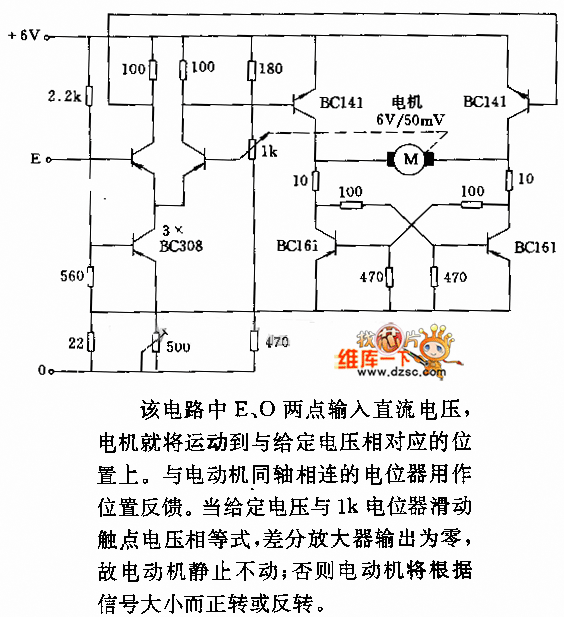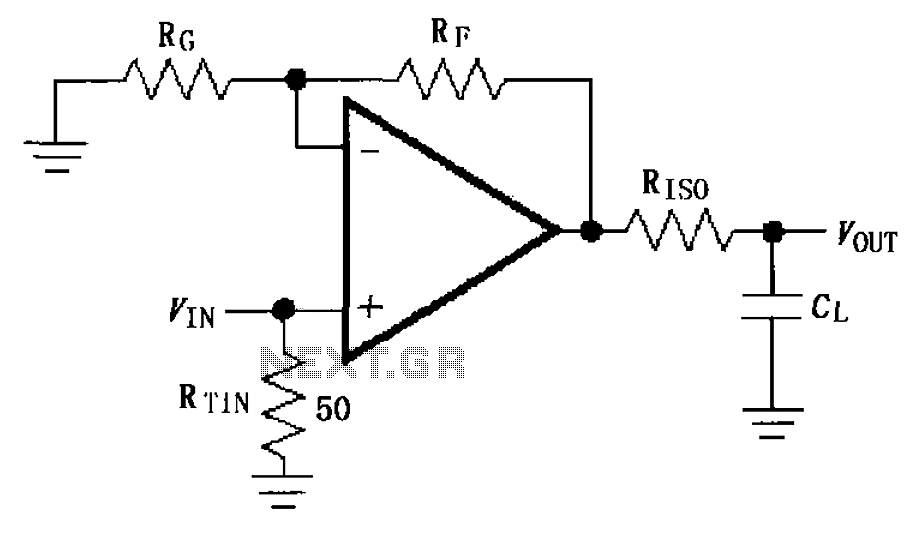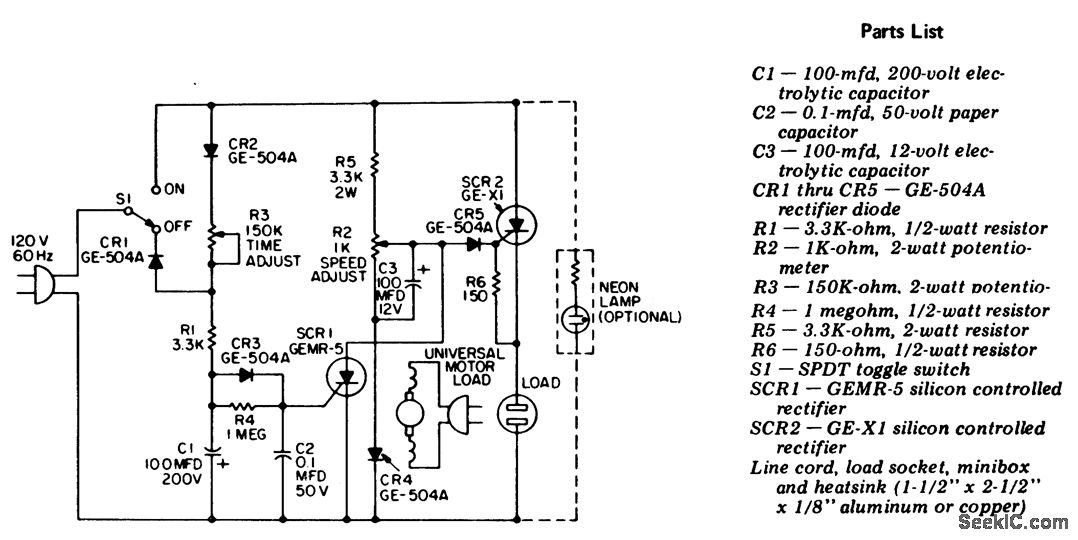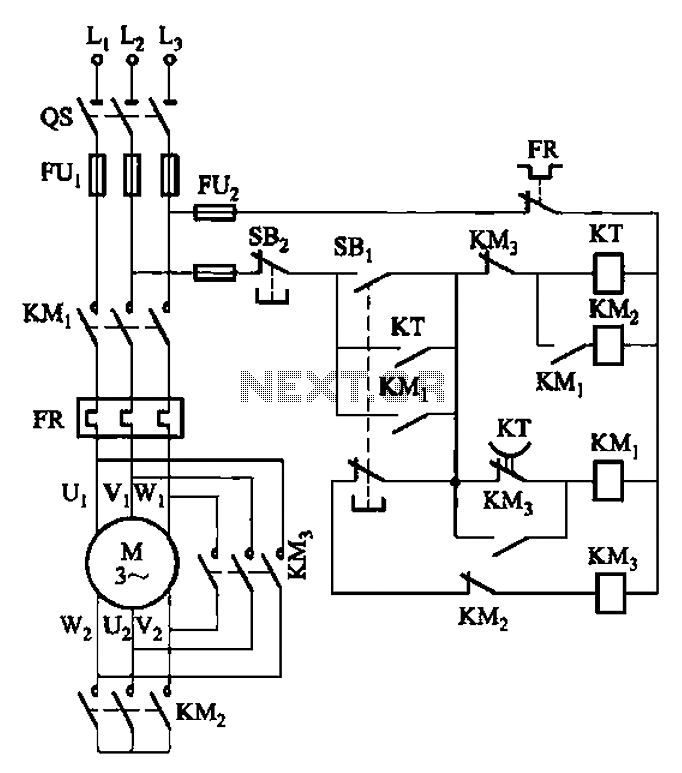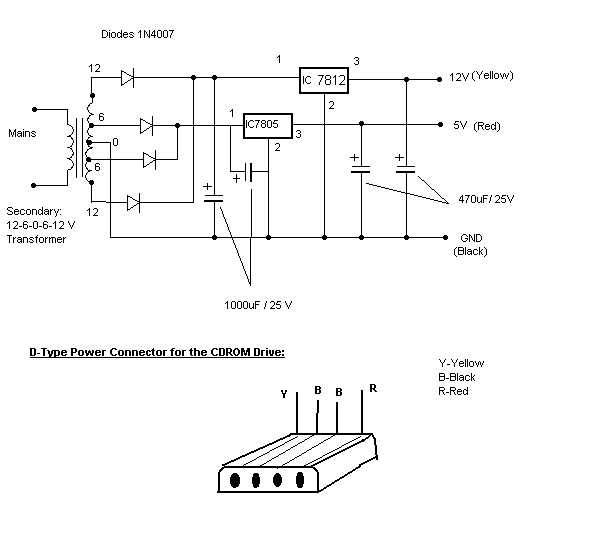
Universal DC Mode Motor Drive
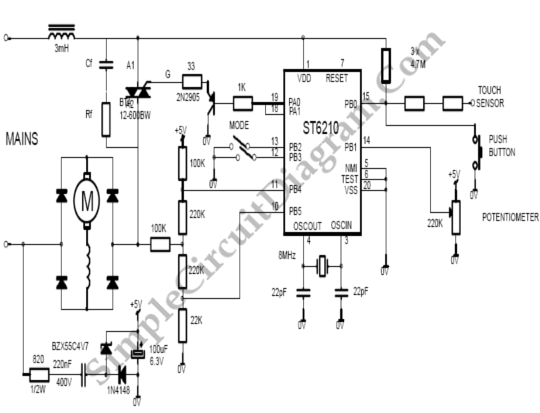
A DC drive for a universal motor is depicted in the figure below. To provide DC current to the motor, a diode bridge has been integrated around the motor. The motor...
The schematic illustrates a DC drive system designed for a universal motor, which is capable of operating on both AC and DC power sources. The primary component of this drive is a diode bridge rectifier, which converts the incoming AC voltage to a stable DC voltage suitable for the motor's operation.
The diode bridge consists of four diodes arranged in a bridge configuration, allowing for the rectification of both halves of the AC waveform. This configuration ensures that the motor receives a continuous DC output, which is essential for its reliable operation. The universal motor can run efficiently on the rectified DC supply, enabling smooth speed control and torque generation.
In addition to the diode bridge, the circuit may include filtering capacitors placed across the output to smooth the rectified voltage, reducing ripple and providing a more stable DC supply. This is crucial in applications where consistent motor performance is required. Furthermore, the implementation of a control circuit, which may include a variable resistor or a microcontroller, can be integrated to adjust the voltage supplied to the motor, allowing for precise speed control.
Protection components, such as fuses or circuit breakers, may also be included in the design to safeguard the motor and the rectifier from overcurrent conditions. Overall, the described DC drive system for the universal motor is an effective solution for applications requiring variable speed control and efficient operation.DC drive for a Universal motor is shown in figure below. In order to supply DC current to the motor, a diode bridge has been added around the motor. The motor.. 🔗 External reference
The schematic illustrates a DC drive system designed for a universal motor, which is capable of operating on both AC and DC power sources. The primary component of this drive is a diode bridge rectifier, which converts the incoming AC voltage to a stable DC voltage suitable for the motor's operation.
The diode bridge consists of four diodes arranged in a bridge configuration, allowing for the rectification of both halves of the AC waveform. This configuration ensures that the motor receives a continuous DC output, which is essential for its reliable operation. The universal motor can run efficiently on the rectified DC supply, enabling smooth speed control and torque generation.
In addition to the diode bridge, the circuit may include filtering capacitors placed across the output to smooth the rectified voltage, reducing ripple and providing a more stable DC supply. This is crucial in applications where consistent motor performance is required. Furthermore, the implementation of a control circuit, which may include a variable resistor or a microcontroller, can be integrated to adjust the voltage supplied to the motor, allowing for precise speed control.
Protection components, such as fuses or circuit breakers, may also be included in the design to safeguard the motor and the rectifier from overcurrent conditions. Overall, the described DC drive system for the universal motor is an effective solution for applications requiring variable speed control and efficient operation.DC drive for a Universal motor is shown in figure below. In order to supply DC current to the motor, a diode bridge has been added around the motor. The motor.. 🔗 External reference
